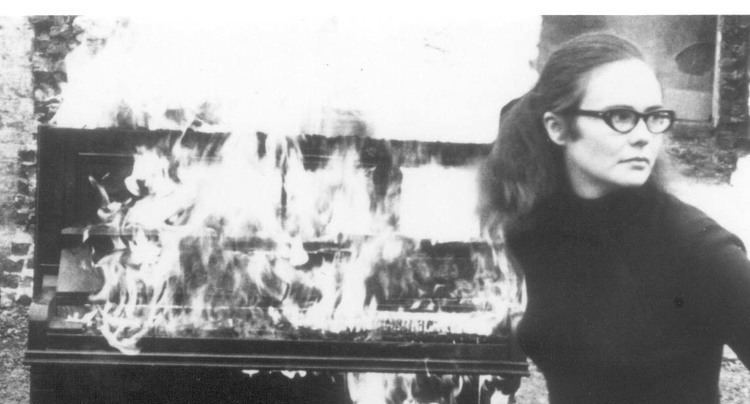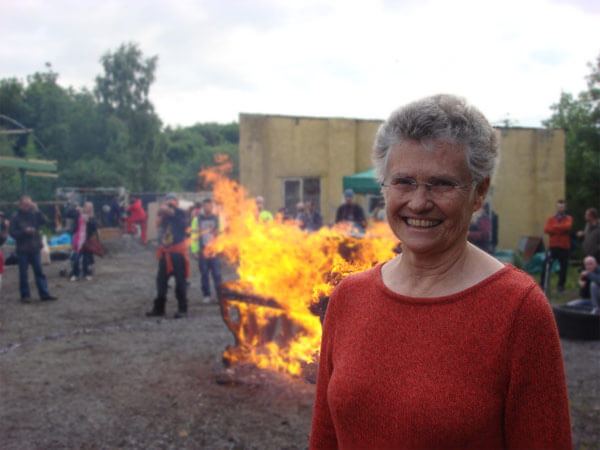Name Annea Lockwood Role Composer | ||
 | ||
Albums A Sound Map of the Danube, The Glass World Similar People Thomas Buckner, Ruth Anderson, Pauline Oliveros, Maggi Payne, David Behrman | ||
Annea lockwood rcsc
Annea Lockwood (born July 29, 1939, Christchurch, New Zealand) is a New Zealand born American composer. She taught electronic music at Vassar College. Her work often involves recordings of natural found sounds. She has also recorded Fluxus-inspired pieces involving burning or drowning pianos.
Contents
- Annea lockwood rcsc
- Annea lockwood a composer and sound artist in the media age
- Life and career
- Reviews and articles
- Discography
- References

Annea lockwood a composer and sound artist in the media age
Life and career
Lockwood studied composition and completed a B.Mus with honors from the University of Canterbury in New Zealand. She studied composition at several institutions around Europe with notable teachers: The Royal College of Music with Peter Racine Fricker (1961–63), the Darmstädter Ferienkurse with Gottfried Michael Koenig (1963–64), the Hochschule für Musik Köln, and also in the Netherlands. During the late 1960s and early 1970s, Lockwood performed and composed around Europe but made London her home, having returned there in 1964. Her compositions feature non-conventional instruments such as glass tubing used in “The Glass Concert” (1967) which was published in Source: Music of the Avant Garde then recorded and released by Tangent records. Her series "Piano Transplants" utilized burning, drowning, or planting pianos in locations in the United Kingdom or United States.
In the 1970s, Lockwood began to compose what could be considered performance art pieces, though her work was still situated in the realm of music; they are considered so because the essence of the compositional ideas made the audience and environment agents in the piece. She was also known to collaborate with various choreographers, sound poets, and visual artists. In 1973, having been invited to teach at Hunter College, Lockwood relocated to New York City. During this time Lockwood worked with environmental sounds, capturing them and building developed compositions around an environmental inspiration: A Sound Map of the Hudson River (1982), World Rhythms (1975), and parts built on of archetypes and conversations with significant people, Conversations with the Ancestors (1979), composed on conversations with 4 women in their eighties, Delta Run (1982, based on a conversation with the sculptor Walter Wincha), One piece, Three Short Stories and Apotheosis (1985) used what Lockwood named the Soundball, which was a foam-covered ball that was made of 6 small speakers and a radio receiver. The impetus for this unusual piece of equipment was to "put sound into the hands of dancers”. In an interview with Peter Shea in 2013, she discussed her development as a composer and work process, particularly the ways she works with the sounds of water. Lockwood’s most recent pieces are written for acoustic-electric instruments and incorporate multi-media and indigenous instruments in her compositions: Thousand Year Dreaming (1991) is a work for four didgeridoos and blends images of the Lascaux cave as part of the performance. In 2002, Lockwood began working on her project, A Sound Map of the Danube River, which gathers sounds recorded from a variety of sites on the surface of, within, and around the river. In 2007, Lockwood was a recipient of the Henry Cowell Award for her work.
Her progressive ideas and the breadth of her range is quite vast; from the microtonal, electro-acoustic soundscapes and vocal music, she seems to have explored and expressed previously ignored spaces in modern composition. Her music has been presented at festivals all over the world, including events in Germany, Scandinavia, Italy, Britain, Australia, New Zealand and the U.S. Lockwood, a Professor Emeritus at Vassar College, NY since 1982, has retired from teaching though she still writes and performs. Her recordings are distributed through these labels: Lovely, XI, ?What Next?/OO Discs, Rattle Records (NZ), Harmonia Mundi, Earth Ear, CRI, and Finnadar/Atlantic.
